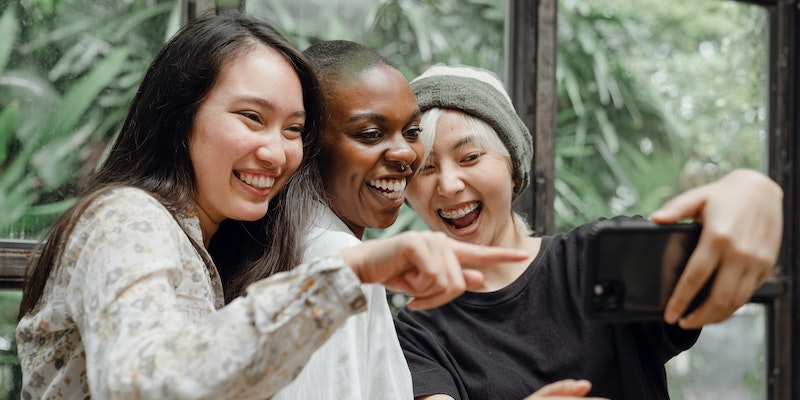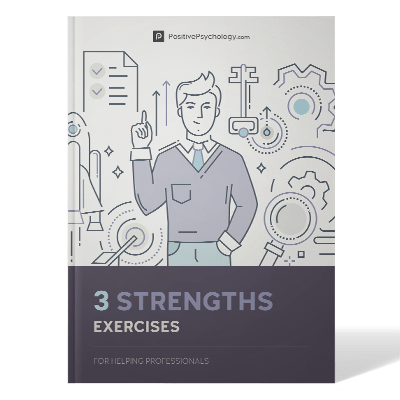Fostering Creativity: 12 Strategies to Boost Creative Skills
 Creativity has been valued throughout human history.
Creativity has been valued throughout human history.
It has also been called “the skill of the future” (Powers, 2018).
This is partly because creativity helps individuals adapt to uncertainty and solve problems as they arise. Research has also suggested that creativity – as a component of the personality factor “openness to experience” – is a better predictor of an extended lifespan than intelligence or overall openness to experience (Turiano, Spiro, & Mroczek, 2012).
For our own good then, it would appear creativity is worth cultivating. But can it be cultivated? If so, how? And what is creativity?
In the following article, we explore what creativity is and how personal creativity can be fostered. We discuss creativity in the classroom and workplace. We touch on creativity in art and music. We also note the intriguing connection between nighttime and creativity.
Before you continue, we thought you might like to download our three Strengths Exercises for free. These detailed, science-based exercises will help you or your clients realize your unique potential and create a life that feels energized and authentic.
This Article Contains:
- What Is Creativity?
- 6 Ways (+1) to Be More Creative
- Fostering Creativity in the Classroom: 3 Tips
- 3 Steps for a More Creative Workplace
- Becoming More Creative in Art and Music: Solitude and Collaboration
- The Link Between Night and Creativity
- PositivePsychology.com’s Resources
- A Take-Home Message
- References
What Is Creativity?
Creativity can be defined as the ability to bring something original and valuable into the world.
Creativity can occur in almost any field. It happens in art and music, of course. It can also happen in mathematics, engineering, science, business, education. Anywhere there are problems to be solved or the mind seeks expression, creativity can be found.
Is creativity a trait that a privileged few are born with?
Not at all. In fact, research on creativity shows it can be fostered in anyone (Neumann, 2007).
Let’s take a look then at how creativity can be encouraged in any person.
6 Ways (+1) to Be More Creative
 Below are six basic tips for fostering personal creativity, and one additional point encouraging you to promote creativity.
Below are six basic tips for fostering personal creativity, and one additional point encouraging you to promote creativity.
1. Daily walking
Walking is the evolutionary basis for many human abilities. It is also known to foster creativity. As O’Mara (2019) writes, our ability to walk upright on our own two feet (bipedalism) has freed our hands and minds to create in ways no other animal can.
O’Mara (2019) holds that minds in motion are more creative. In one example, he relates that the Irish mathematician Sir William Hamilton had struggled for years with how to perform specific calculations in three-dimensional geometry.
Then one day in 1843, while walking beside the Royal Canal in Dublin, Hamilton made an intellectual breakthrough. He realized how quadrupled numbers or “quaternions” could be used to calculate not only in three but four dimensions (the fourth dimension being time). He quickly carved the formula for quaternions on a stone in the nearby Broom Bridge.
Since 1990, mathematicians from around the world have gathered for a commemorative “Hamilton Walk,” from his home in Dublin to the bridge where he carved his breakthrough formula.
Who knows what further mathematical breakthroughs might occur on this commemorative walk, sparked by minds in motion?
At Stanford University, Oppezzo and Schwartz (2014) compared individuals’ creativity while sitting to that when walking (including walking inside versus outside). Subjects were asked to perform various tasks requiring creativity while walking indoors on a treadmill, walking outdoors, sitting indoors, or sitting in a wheelchair outdoors as it was being pushed.
In one task, subjects were given three objects and asked to think of as many different uses as they could for each object. Overall, creative output was found to improve by about 60% when walking (either indoors or out), versus sitting. So, if you’re looking to boost your creativity, try going for a short walk – or a long one.
2. Set task limits
This idea is borrowed from an entrepreneur who called it “embracing constraints” (Tank, 2019). This might seem counterintuitive at first. Doesn’t being creative imply being more expansive, letting one’s mind run free? Actually, setting strict limits can also foster creativity.
Tank (2019) cites the example of Theodor Geisel (Dr. Seuss), whose editor bet him he could not write a children’s book using only 50 different words. Geisel rose to the challenge, producing under this unusual constraint one of his bestselling and most memorable books: Green Eggs and Ham (Seuss, 1960).
So, consider setting some unusual limits for yourself. Whatever the activity, you might find that setting limits produces interesting and creative results.
3. Relax
Relaxation is known to enhance creativity. There are various proven ways to put oneself in a relaxed state. These include progressive muscle relaxation, diaphragmatic breathing, walking meditation, and yoga postures.
For example, progressive muscle relaxation has been associated with reductions in heart rate, anxiety, and perceived stress. In addition, relaxed states have been shown to foster thought processes important for creativity. For example, diaphragmatic breathing has been associated with improved attention, a key component in creative problem solving (Ma et al., 2017).
Furthermore, stress – the opposite of relaxation – is known to kill nerve cells in the hippocampus, an area of the brain where new memories are formed. These new memories help us make connections with other things, fueling the creative process. Stress management is, therefore, imperative.
So, take a break. Create a relaxed state for yourself by breathing deeply, stretching, going for a walk, whatever works for you. Once relaxed, you might find a creative answer to a problem that has been eluding you.
4. Collaborate
There is a famous image of the solitary genius, working alone in a lab or searching for a melody on a lone piano. But is the ‘solitary genius’ a myth? In a paper on collaboration and creativity, Uzzi and Spiro (2005, p. 447) note how collaboration can boost creative production: “creativity is not only, as myth tells, the brash work of loners, but also the consequence of a social system of actors that amplify or stifle one another’s creativity.”
Uzzi and Spiro (2005) argue that many of history’s great creators – such as Beethoven, Marie Curie, the Beatles, and Maya Angelou – were involved in creative networks in which members critiqued, encouraged and collaborated on each other’s projects.
So, if you tend to work alone and find yourself stuck on a project, consider seeking collaboration, for example, by discussing your project with another person in your field. You might find a new way forward on your project, with a little help from your friends.
5. Sleep on it
Artists, scientists, and other creative individuals have often described how sleep, and especially dreaming, helped them create new solutions to persistent problems.
For example, the psychobiologist Otto Loewi had a recurring dream that contained the design of an experiment. This experiment would later prove that brain cells communicate via chemicals or “neurotransmitters.” For this discovery, Loewi would share the Nobel Prize in medicine in 1936 (McCoy & Tan, 2014).
More recently, various experiments have shown how sleep promotes creative problem solving. One set of experiments suggested that in REM (dream phase) sleep, the brain replays memories to extract essential patterns or lessons from them.
In non-REM (deep or dreamless) sleep, the brain then makes connections between these patterns or lessons and other things we already know (Lewis, Knoblich, & Poe, 2018). We can thereby arrive at new solutions to problems that have preoccupied us during waking hours; as when, for example, James Watson dreamed of two intertwined serpents, leading to the discovery of DNA as a double helix (Conradt, 2012).
So, if your mind is stuck on a problem, try sleeping on it. You might wake up with your solution.
6. Genius hour
This tip for fostering creativity comes from a teacher who uses it in his classroom (Provenzano, 2015).
He calls it “genius hour,” but the period spent could be more or less than 60 minutes. The idea is to start a side project, something you are passionate about. The inspiration, ideas, and skills you develop in this labor of love might well translate to other, more routine projects, moving those forward in positive ways.
+1. Your creative tip
It seems appropriate that an article on fostering creativity would encourage you, the reader, to come up with at least one of your own tips in this regard. We invite you to think of something that has helped you foster creativity in yourself or others. Feel free to share any such suggestions in response to this article.
Fostering Creativity in the Classroom: 3 Tips
Allowing kids to develop their creativity from a young age will give them skills for a lifetime.
1. Value creativity
In the classroom, show your students that you value creativity. This can be done in many ways.
Encourage trial and error on tasks. Thomas Edison famously said, of different trials to solve a given problem, “I haven’t failed. I’ve just found 10,000 ways that won’t work” (Daum, 2016).
Sometimes, by finding what won’t work, you are led to what will, as when Edison tried hundreds of materials as microphone transmitters before successfully narrowing the choice to a small carbon disc.
2. Give it time
Valuing creativity also means giving it time in the classroom. Sarah Diaz, a kindergarten teacher in Spain, asserts that adequate time is crucial for creativity, especially for young children (Tornio, 2017). Consider giving students an entire class period each week to work freely on projects and materials they have chosen.
3. Write it down
Lauren Cassini Davis, a second-grade teacher, describes the effect on her classroom of handing out “Da Vinci” notebooks to all students (Davis, 2018). These are empty notebooks in which students are encouraged to write any questions, ideas, or expressions that occur to them, at any time during the day, on any topic, as Leonardo Da Vinci did throughout his long and creative life.
Ms. Davis relates how, within just one week, she was astounded by everything that the students had written in their notebooks. The notebooks were full of questions such as ‘How does your brain work?’ ‘Why do we have music?’ and ‘Why am I not a tiger?’ There were also poems, drawings of inventions, and comments about life in the classroom. These notebooks became a spur to all kinds of creative learning projects.
3 Steps for a More Creative Workplace
 Do you want to encourage creativity in your workspace? Then follow the next three steps for a start.
Do you want to encourage creativity in your workspace? Then follow the next three steps for a start.
1. Break boundaries
In 2014, Steve Jobs and Apple unveiled a new corporate headquarters in Cupertino, CA.
According to Johnny Ives, Apple’s chief designer, this headquarters was meant to break down boundaries between offices and occupations.
The new Apple headquarters maximized common pathways and workspaces, allowing people to “connect and collaborate and walk and talk” (Levy, 2017). It seems to have worked. In 2018, Fast Company recognized Apple as (still) the most innovative company in the world (Safian, 2018).
2. Give it time
Fostering creativity takes dedicated time. We noted this above, concerning creativity in the classroom. It also applies to the workplace.
Google, for example, was known for its “20%” program. This program gave software developers and other employees permission to work 20% of their paid time on projects of their choosing. While Google eventually took back this 20% time, it was credited with spawning some of the company’s best products including Google News, Gmail, and AdSense.
Other companies have adopted various approaches to giving creative time in the workplace, with the consensus being that creativity is a business asset, and employees should be given time to explore and develop their new ideas (Subramanian, 2013).
3. Promote trial and error
According to business consultant Deborah Goldstein, creativity in business requires experimentation, and even failure, to be supported. She asserts that “Experiments never fail. Even when the attempt fails, with the right mindset, teams learn priceless lessons to succeed in the future” (Forbes Coaches Council, 2017).
Becoming More Creative in Art and Music: Solitude and Collaboration
In particular art forms, such as painting, work is often solitary. Artists need time and solitude to focus on the act of painting. Yet such solitude can be difficult to bear if not broken by social contact.
Jason Horejs (2020) writes of breaking the isolation that can occur in art. He cites the example of a female painter living in a small town in Montana. This artist speaks of how joining an artists’ group in her area helped her socially and artistically.
The group meets every Saturday to paint together. They regularly hold art shows with constructive critiques of each other’s work. They also have a group website with links to individual artists’ web pages.
Such collective pursuits have helped this artist remain inspired and creative, even when alone in her studio. In the end, it might be some mixture of solitude and collaboration that keeps us creative in art. What of music?
In his autobiography Testimony (2016), Robbie Robertson, guitarist and principal songwriter for The Band, describes how his band was used to creating songs.
Robertson often drafted songs on his own. He sketched “The Weight,” a classic The Band song, by himself in one night. Afterward, he would bring these song ideas to the group.
They worked in close company to flesh the songs out, in the basement of a large pink house in upstate New York. Their group creativity thrived on being able to hear each other’s musical ideas, moment to moment. It was also important for them to see each other’s musical cues.
Robertson then relates how during their first recording session for Capitol Records, band members were separated from each other in the studio. Partitions had been put up to better record the distinct sound of each instrument. However, the band members soon found that without being able to see or hear each other as usual, they lacked the organic sound that had so impressed Bob Dylan and other musicians.
At Robertson’s insistence, the studio partitions were removed. The resultant recordings went on to become the highly creative and acclaimed album Music from Big Pink. The Band had thus found the type of working and studio environment that facilitated creativity for them.
And Robertson had found the interplay between solitude and collaboration that worked best for The Band’s material. Again, it might be a unique balance of solitude and collaboration that helps us be most creative in art and music.
The Link Between Night and Creativity
 Some of us are more creative at night.
Some of us are more creative at night.
As nocturnal (versus diurnal or daytime) types, we find the quiet of night refreshing and open with possibilities.
Some well-known “night owls” more inclined to working and innovating after dark include individuals as diverse as Winston Churchill, Christina Aguilera, Bob Dylan, Fran Leibowitz, and Barack Obama (Curtin, 2018).
Giampietro and Cavallera (2007) explored creativity in people inclining toward a nocturnal work schedule. They found nocturnal types scored more highly than diurnals on a task (Torrance Test of Creative Thinking) measuring creativity on dimensions of originality, fluidity, and flexibility of responses.
But take heart, diurnal types.
Plenty of diurnal individuals swear by such pro-daytime habits as rising early and are very creative in their own right. Apple CEO Tim Cook rises at 3:45 a.m., while Oprah Winfrey, Michelle Obama, and General Stanley McCrystal are also early risers, who swear this starts their day off right.
In the end, what counts most is finding the schedule – nocturnal, diurnal, or somewhere in between – that best suits your personality, circumstances, and creativity.
PositivePsychology.com’s Resources
The following PositivePsychology.com worksheets might also prove helpful in fostering creativity.
- Visualize Success. This resilience-building exercise invites individuals to engage their creative thinking to visualize successful performance.
- Career Visualization. This exercise is similar to the previous visualization, and is designed to help individuals imagine in a detailed way how it would look, feel, and be to have the career they
would like. - Social Problem Solving. This exercise was developed to help individuals or groups apply brainstorming techniques when solving problems. Clients generate as many solutions as they can to a problem, emphasizing quantity over quality, then assess each possible solution in terms of effort required
- Designing Affirmations Worksheet. This exercise was developed to help individuals creating self-affirmations that can help them help them build self-esteem.
- If you’re looking for more science-based ways to help others develop their strengths, this collection contains 17 strength-finding tools for practitioners. Use them to help others better understand and harness their strengths in life-enhancing ways.
A Take-Home Message
Creativity – the ability to bring something original and valuable into the world – is not reserved for a privileged few artists or intellectuals. We all have the potential to be creative. This potential can be cultivated by finding the specific means for enhancing creativity in a given individual or group.
Specific means for an individual might include going for a walk or engaging in relaxation exercises that enhance thinking and creativity.
Means for cultivating creativity in groups might include providing students or employees with Da Vinci-style notebooks for writing down ideas as they occur, designing workspaces that invite collaboration, or setting aside “genius time” for your students’ or employees’ creative pursuits.
In the end, we need to be adaptive and innovative in finding the means by which creativity is enhanced for a particular person, group, or situation.
We hope you enjoyed reading this article. Don’t forget to download our three Strengths Exercises for free.
- Clarke, J. (2018). Breeding ideas. Minds at Work. Retrieved from http://www.mindsatwork.com.au/innovation-2/breeding-ideas/
- Conradt, S. (2012, October 11). Creative breakthroughs people had in their sleep. Mental Floss. Retrieved from https://www.mentalfloss.com/article/12763/11-creative-breakthroughs-people-had-their-sleep
- Curtin, M. (2018, January 30). 7 things night owls do that morning people will never understand. Inc. Retrieved from https://www.inc.com/melanie-curtin/7-things-night-owls-do-that-morning-people-will-never-understand.html
- Daum, K. (2016, February 11). 37 quotes from Thomas Edison that will inspire success. Inc. Retrieved from https://www.inc.com/kevin-daum/37-quotes-from-thomas-edison-that-will-bring-out-your-best.html
- Davis, L. C. (2018, December 17). Creative teaching and teaching creativity: How to foster creativity in the classroom. Psych Learning Curve. Retrieved from http://psychlearningcurve.org/creative-teaching-and-teaching-creativity-how-to-foster-creativity-in-the-classroom/
- Forbes Coaches Council. (2017, December 21). 15 ways leaders can promote creativity in the workplace. Forbes. Retrieved from https://www.forbes.com/sites/forbescoachescouncil/2017/12/21/15-ways-leaders-can-promote-creativity-in-the-workplace/#6d08235f58ef
- Giampietro, M., & Cavallera, G. M. (2007). Morning and evening types and creative thinking. Personality and Individual Differences. 42(3), 453–463.
- Horejs, J. (2020, April 19). Working alone: Breaking the isolation that can surround the pursuit of art. red dot blog. Retrieved from
https://reddotblog.com/working-alone-breaking-the-isolation-that-can-surround-the-pursuit-of-art-19-2/ - Levy, S. (2017, May 16). Inside Apple’s insanely great (or just insane) new mothership. Wired. Retrieved from https://www.wired.com/2017/05/apple-park-new-silicon-valley-campus/
- Lewis, P. A., Knoblich, G., & Poe, G. (2018). How memory replay in sleep boosts creative problem-solving. Trends in Cognitive Sciences, 22(6), 491–503.
- Ma, X., Yue, Z. Q., Gong, Z. Q., Zhang, H., Duan, N. Y., Shi, Y. T., … & Li, Y. F. (2017). The effect of diaphragmatic breathing on attention, negative affect, and stress in healthy adults. Frontiers in Psychology, 8, 874.
- McCoy, A. N., & Tan, S. Y. (2014). Otto Loewi (1873–1961): Dreamer and Nobel laureate. Singapore Medical Journal, 55(1), 3–4.
- Neumann, C. J. (2007). Fostering creativity. A model for developing a culture of collective creativity in science. EMBO Reports 8(3), 202–206.
- O’Mara, S. (2019). In praise of walking: The new science of how we walk and why it’s good for us. Penguin Books.
- Oppezzo, M., & Schwartz, D. L. (2014). Give your ideas some legs: The positive effect of walking on creative thinking. Journal of Experimental Psychology: Learning, Memory, and Cognition, 40(4), 1142–52.
- Powers, A. (2018, April 30). Creativity is the skill of the future. Forbes. Retrieved from https://www.forbes.com/sites/annapowers/2018/04/30/creativity-is-the-skill-of-the-future/#1ba564e34fd4
- Provenzano, N. (2015, June 25). Creativity in the classroom. Edutopia. Retrieved from https://www.edutopia.org/blog/creativity-in-the-classroom-nicholas-provenzano
- Robertson, R. (2016). Testimony. Knopf.
- Safian, R. (2018, February 21). Why Apple is the world’s most innovative company. Fast Company. Retrieved from
https://www.fastcompany.com/40525409/why-apple-is-the-worlds-most-innovative-company - Seuss, D. (1960). Green eggs and ham. Beginner Books.
- Subramanian, S. (2013, August 19). Google took its 20% back, but other companies are making employee side projects work for them. Fast Company. Retrieved from https://www.fastcompany.com/3015963/google-took-its-20-back-but-other-companies-are-making-employee-side-projects-work-for-them
- Tank, A. (2019, June 7). I trained myself to be creative by doing these nine things. Fast Company. Retrieved from https://www.fastcompany.com/90360673/i-trained-myself-to-be-creative-by-doing-these-9-things
- Tornio, S. (2017, March 3). Nine teacher-tested ways to encourage creativity in the classroom. We Are Teachers. Retrieved from https://www.weareteachers.com/encourage-creativity-classroom/
- Turiano, N. A., Spiro, A., 3rd, & Mroczek, D. K. (2012). Openness to experience and mortality in men: Analysis of traits and facets. Journal of Aging and Health, 24(4), 654–672.
- Uzzi, B., & Spiro, J. (2005). Collaboration and creativity: The small world problem. American Journal of Sociology, 111(2), 447–504.
Let us know your thoughts
Read other articles by their category
- Body & Brain (49)
- Coaching & Application (57)
- Compassion (26)
- Counseling (51)
- Emotional Intelligence (24)
- Gratitude (18)
- Grief & Bereavement (21)
- Happiness & SWB (40)
- Meaning & Values (26)
- Meditation (20)
- Mindfulness (45)
- Motivation & Goals (45)
- Optimism & Mindset (34)
- Positive CBT (28)
- Positive Communication (20)
- Positive Education (47)
- Positive Emotions (32)
- Positive Leadership (18)
- Positive Parenting (4)
- Positive Psychology (33)
- Positive Workplace (37)
- Productivity (16)
- Relationships (46)
- Resilience & Coping (36)
- Self Awareness (21)
- Self Esteem (37)
- Strengths & Virtues (31)
- Stress & Burnout Prevention (34)
- Theory & Books (46)
- Therapy Exercises (37)
- Types of Therapy (64)




What our readers think
I’ve found in my own creative career, that any activity that clears the mind of the daily channel fodder, a lot of it worry based, is essential to allow the juice to flow. An example being that if a life stress hits hard, creativity is impossible. Another base philosophy is maintaining the child’s ability to be curious, unattached/open and make it fun always. Through the eyes of a child. I’ve told many people I see they are creative and they always say “I cannot draw to save my life!” So I think what you have laid out is very useful as the first things to know. It takes away this mystery of being born creative. Well done. By the way I’m a night time creator, originally driven by a total fear of ending up in a factory after school, (fact) braved my way into Art College, committed to working my ass off and realizing that to be creative was mostly desire and great teachers taught you all the formulas for improving a scant talent as presentable work. I now “go” with the first idea that comes into my view/head, no matter what, then work it. Always make at least four options. The more you make the better you get, because your brain makes brand new connections every time you stretch a little. You grow confident re enforced by a passion that is FUN. I go daydream/meditate mode for an hour every night and it works wonders for me personally. I also add chats to myself or others, amongst that mode. For me it’s like an natural method of doing a factory mind reset!
Vassudeva (post on 27 November, 2020),
Thank you for your comment!
I agree that walking is a great technique for fostering creativity. I’m glad you’ve been inspired to walk daily.
It also occurs to me that such walks can be paired with journaling, in a “walk journal” that records any new ideas that came while walking. Probably best to write any ideas down immediately after the walk, so they don’t slip away.
best,
Jeff Gaines
My Major Misconception is now Rectified!! Today I realized Creativity Can be Fostered in anyone at any age..Thanks for the Info. I am now starting to walk daily to improve my Creative Thinking.
Various dimensions in which we can foster creativity is well explained. Will be trying-out in my work group.
Thank you for the feedback! I agree we are designed for creativity, even if trends in a given society work to keep us doing rote or mechanical tasks, toward someone’s else’s ends. But the creative potential is there, and I do believe can be cultivated.
loved the article…its a common misconception that creativity is the blessing only a few enjoy, I believe humans have been fundamentally designed for creativity….we just have very different expressions. Infact i have found trapped creative energy as one of the issues while working with those experiencing a low emotional state,
This such reach article with ample ideas for adults and school age as well … It just make you think the opportunities on embarking on creativity journey
Thank you for the comment.
I’m glad you found the article thought-provoking!
Sincerely,
Jeff Gaines